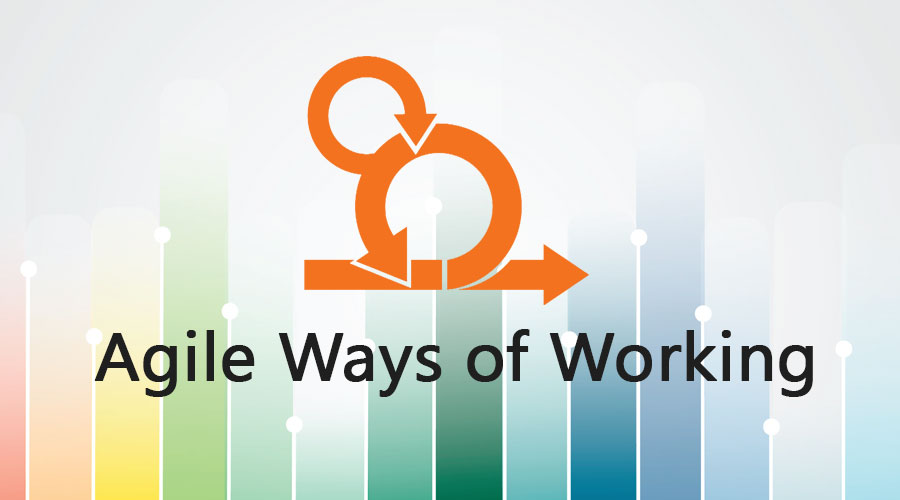Updated June 1, 2023

Agile Ways of Working
Agile working or agile ways of working can be described as the working style or the working arrangement, which empowers the team members and the organization’s people to work with full freedom. They are free to work when, where, and how they want to. This approach proves extremely beneficial in both process management and project management. It provides minimum restrictions and maximum flexibility to deliver the best-in-class service and enhance their performance. It is also known as Agile Based Working or Activity Based Working. Agile working helps to create the best workforce to bring major profit and value to the organization.
It is different from flexible working in that flexible working provides a relaxed start and finish of the work or provides the provision to work from home in specific scenarios but with restrictions. Flexible working does not include issues like workspace or workplace sharing; however, agile working covers a wider scope of flexibility and empowers employees. Implementing the agile ways of working is not an overnight process, and it takes time. Agile working ways implementation requires collaboration and coordination of both the employee and the employer for its success. It is suggested to start with individual departments while implementing it in big organizations, as changing the whole organization in one go is not feasible. Departments like strategic planning and resource allocation find these rules extremely beneficial, as they lead to new product development and embrace optimized working methods.
Categories Of Agile Working Ways
The Agile Working Ways can be categorized into the following categories namely:
- Time of working – When to work
- Role of team members – What task has been assigned to them
- Location of work – Where you are working
- Source – The other cross-functional teams and tasks you are working with
Key factors
- Behavioral Management: Behavioural management is crucial during agile both the employee and the employer must maintain the implementation of agile ways of working as trust and accountability. Both are responsible for understanding the work assigned to them and what is expected of them.
- Boundaries: As rules, regulations, and work cultures vary from one organization to another, it’s crucial to clearly explain boundaries and rules to all team members for the successful implementation of agile working.
- Agile Workspace: Agile working empowers employees to choose when and where to work. Therefore, an agile workspace should ideally provide comprehensive facilities like cafes, break-out areas, and spaces for informal meetings, offering employees or team members the freedom to work as they please.
- Technology: Technology is essential for the successful implementation of agile working. The availability of technology enables project implementation and completion using tools and software, empowering employees to work at their convenience, wherever they choose. Proper synchronization of technology and people is essential to gain profit.
Terms
- Activity-Based Working: In agile working, the focus is on organizing the workplace as per the tasks and activities instead of working on a hefty chunk of work. It reduces the load and makes the task easier to carry out.
- Hot Desk: Hot desk is the concept of sharing the workstation on a need basis. This helps to save space, and the desk is not idle for a long time. The organization can reduce the cost of office furniture and resolve space issues with this approach. Thus, this approach achieves a better infrastructure at a reduced cost.
- Open Communications: It promotes open communication and the use of technology for communication like Skype, internet messenger, video calls, and chats so that there is no chaos or ambiguity about the work among the team members.
- Flexible working and work hours: Flexible working hours focus on the needs of the workers and the time they spend in the office.
Benefits
- It promotes the productivity and work-life balance of the employee.
- It empowers employees by allowing them to choose when, where, and how they want to work.
- Better space management in the workplace reduces the organization’s expenses.
- Agile work promotes freedom and provides independence to employees.
- Agile provides maximum flexibility and minimal restrictions while working.
It helps to implement the most effective way of carrying out a particular task by collaborating with the staff together. It simultaneously brings the people, processes, and technology of project management to optimize performance and achieve the organization’s target. This approach empowers team members to collaborate on the project. Agile working stimulates employees’ motivation, innovation, productivity, and team spirit, thereby increasing job satisfaction and attracting talent. Because the employees feel motivated, they strive to achieve higher customer satisfaction, boosting the company’s profits. It maintains a balanced and better work-life balance for the team members, which keeps them happy and jolly, which is essential for a good work spirit.
They believe that granting autonomy to cross-functional teams and team members unlocks the key to accomplishing tasks rather than focusing on low-priority factors. It emphasizes producing the product through iterative cycles while actively seeking customer feedback. This approach allows the development team to rectify defects and flaws within the product quickly. The team then prepares for the next iteration, achieving excellence through continuous learning.
Recommended Articles
This has been a guide to Agile Ways of Working. Here we have discussed the Key Factors, Terms, and Benefits of Agile Ways of Working. You may also have a look at the following articles to learn more –

